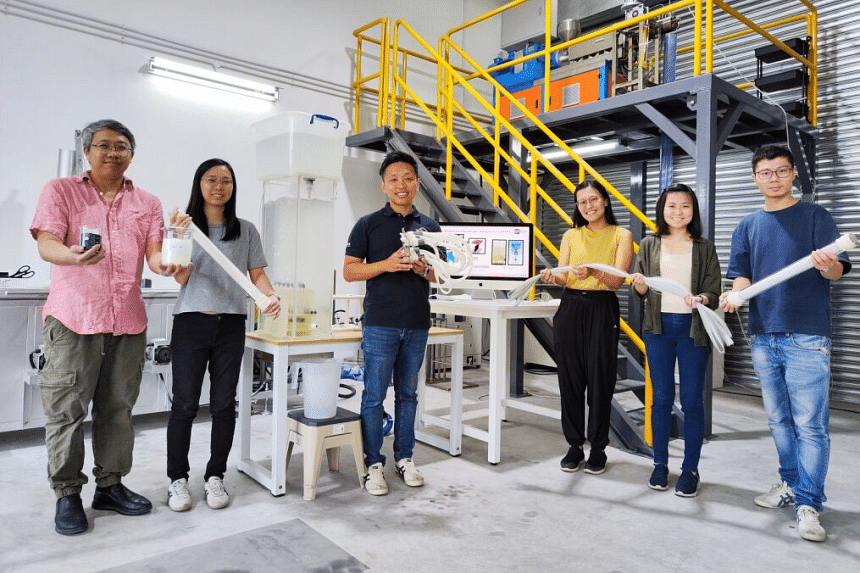SINGAPORE – Researchers here have created a water treatment system that will make large-scale clean water production affordable for developing countries.
Known as TeraStream, the system will be used in a facility to treat river water in north-east Vietnam’s Ha Tinh province. It can treat 10,000 cubic m of water per day, providing some 30,000 people with clean water from 2025.
The system costs $500,000 to $600,000 to build, about half the cost of a conventional system.
TeraStream incorporates special membranes made from polypropylene, a low-cost material commonly used in plastic bags.
Atera Water chief executive Adrian Yeo, who co-founded the start-up behind the innovation, told reporters that while similar polypropylene membranes are available in the market, they are usually suitable only for home use because they break easily when subject to cleaning procedures in commercial plants.
In contrast, Atera’s membranes, known as Clarity, are fitted with a layer of special carbon nanoparticles, essentially strengthening them.
The membranes are also easier to manufacture and more environmentally friendly, unlike conventional polyvinylidene fluoride (PVDF) membranes used by developed countries, including the ones used in Singapore, Dr Yeo noted.
“These conventional systems are currently too expensive to purchase and operate for communities in developing countries, and often require skilled labour to maintain and control these systems,” he said.
Cost aside, water treatment systems used here are also designed to be highly efficient and are suitable for Singapore, which faces scarcity of land, but this is not necessarily an issue faced by neighbouring countries like Vietnam and the Philippines.
Conventional PVDF membranes need significant amounts of electricity and chemicals to maintain in order to operate at a higher water pressure. Frequent cleaning is also required to remove contaminants, which form waste sludge that needs to be treated and landfilled.
The start-up had collaborated with Professor Hu Xiao of Nanyang Technological University’s School of Materials Science and Engineering to design the Clarity membranes, and they worked with researchers from the Singapore Institute of Technology (SIT) to incorporate the membranes into TeraStream.
Besides Vietnam, the system can also be adapted to treat river or lake water in other countries, with the team already receiving interest from the Philippines and Malaysia.
In the past, these countries had relied on pumping groundwater, which is becoming increasingly polluted. The practice has also been the cause of cities losing ground, or sinking. As a result, many countries are turning to surface water from rivers and lakes, which requires more treatment than groundwater.
However, the rudimentary sand filter systems, which were previously effective in purifying water from groundwater sources and rivers, are beginning to falter due to over-extraction of groundwater, and extreme rainfall causing sludge dumped in landfills to penetrate into the ground and rivers, worsening water pollution.
With the awareness that climate change is causing more water stress among these communities, the team wanted to create a solution that had sustainability at its centre, said Atera co-founder and chief operating officer Tai Kee.
Assistant Professor Elisa Ang, who is from SIT’s engineering cluster, said that by carefully controlling the water flow in the system, TeraStream has been able to operate at a low and stable water pressure, which can reduce chemical and electrical consumption by up to 90 per cent, compared with conventional systems.
Dr Yeo noted that no sludge is produced in the treatment process, and the silt and bacteria are filtered back into the river, leaving the water quality in its original state.
Said Ms Tai: “I believe our innovation can aid the millions of people in water-stressed countries... Coming from Singapore, which transformed from a nation facing water scarcity to a global water hub today, we want to take this water story further by using our technological expertise to bring affordable clean water to the rest of the world.”


